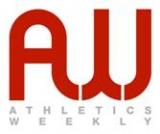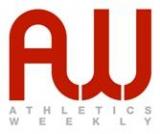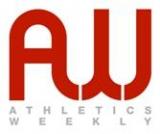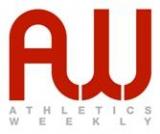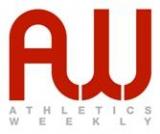Folders |
How to run 1500mPublished by
Sport scientist Eleanor Jones takes a look at the physiological requirements for the 1500mThe 1500m requires the speed usually associated with the long sprints and the aerobic capacity of a long distance runner to help you sustain it for the entirety of the race. So what do you need to do to run a 1500m race? PacingThe 2004 Athens Olympic Games 1500m final was won by Hicham El Guerrouj (pictured above) in 3:34.19 a time almost eight seconds slower than his world record. The first 400m was completed in 58.3 seconds which was from an initial acceleration of a standing start. Thereafter, the pace remained relatively high, despite a dip in speed during the second lap. The 400m splits then never fell below 60 seconds (see diagram 1 below).
The second half of the race was characterised by an ever-increasing pace. This strategy is called a negative split and is highly effective in middle-distance events like the metric mile. Getting your pacing wrong can mean blowing-up prematurely a feeling of being out of breath and heavy legs that can t respond to any increase in pace. Track racing isn t just about who has the fastest time going into the race it s all about who crosses the line first! Tactics come into play, and athletes must therefore select the most appropriate strategy to enable them to kick effectively in the final and vital stages of a race where success and failure can be decided by fractions of a second. PhysiologyOn the inside, the muscles, heart and lungs need to respond to provide oxygen and fuel to the muscles, and help shift away any waste products. There s an initial lag while the body recognises and responds to the signals being produced by the contracting muscles in the legs. It feels like that first 20-30 seconds is free no effort, just speed. During this time, the body relies on fuels already stored in the muscles creatine phosphate and then (anaerobic) glycogen as a stop-gap. These are quick to use and great for when you want to run fast, but are only present in small amounts. They also produce waste products that, if allowed to accumulate, can start to cause premature fatigue. Looking at diagram 2 below, we can see this initial lag marked by an asterisk. On the bottom, we have time and on the y-axis we can plot almost any physiological value heart rate or oxygen uptake, for example.
The body rapidly increases breathing and heart rate to meet the demands of the race until it reaches a plateau (usually at maximum). This is where we start to see a shift from anaerobic fuels towards aerobic sources, although it s important to realise there s still a large anaerobic contribution (about 20% depending on such things as gender and pace). The maximal rate of oxygen uptake or more commonly the VO2 max has been shown in laboratory studies to be a key determinant of middle-distance performance. It s like the athletics equivalent of having a big engine. Getting up to VO2 max as quickly as possible will help to save valuable anaerobic stores for that final kick. It s a key limiting factor and explains why getting your pacing wrong (and running faster than your maximum, into the red) can hurt your performance. Laboratory tests don t explain every aspect of performance. We can t measure the effect of a crowd or even control the tactics. There s nutrition and psychology too and, to get to the Olympic final, athletes have to run a heat and semi-final. Training checklistYour training should follow the SAID” principle Specific Adaptations to Imposed Demands. This means you get better (adapt) to the training you do. That might be building more muscle or more mitochondria (the muscle s power station) or tolerating higher levels of discomfort. It goes without saying that you won t get better at what you don t work on in training and as a 1500m runner you need to train the attributes that determine your success. These include: Pacing strategy: know how hard is too hard and control it in a race situation; Ingham et al (2008) Determinants of 800m and 1500m Running Performance Using Allometric Models; MSSE. Eleanor Jones is senior sport scientist at the University of Birmingham and a BASES- accredited sport scientist with an IOC diploma in sports nutrition This article was first published in the May 16, 2013, issue of AW and was first posted online on June 11, 2013 The post How to run 1500m appeared first on Athletics Weekly. Read the full article at: www.athleticsweekly.com
More news
|

